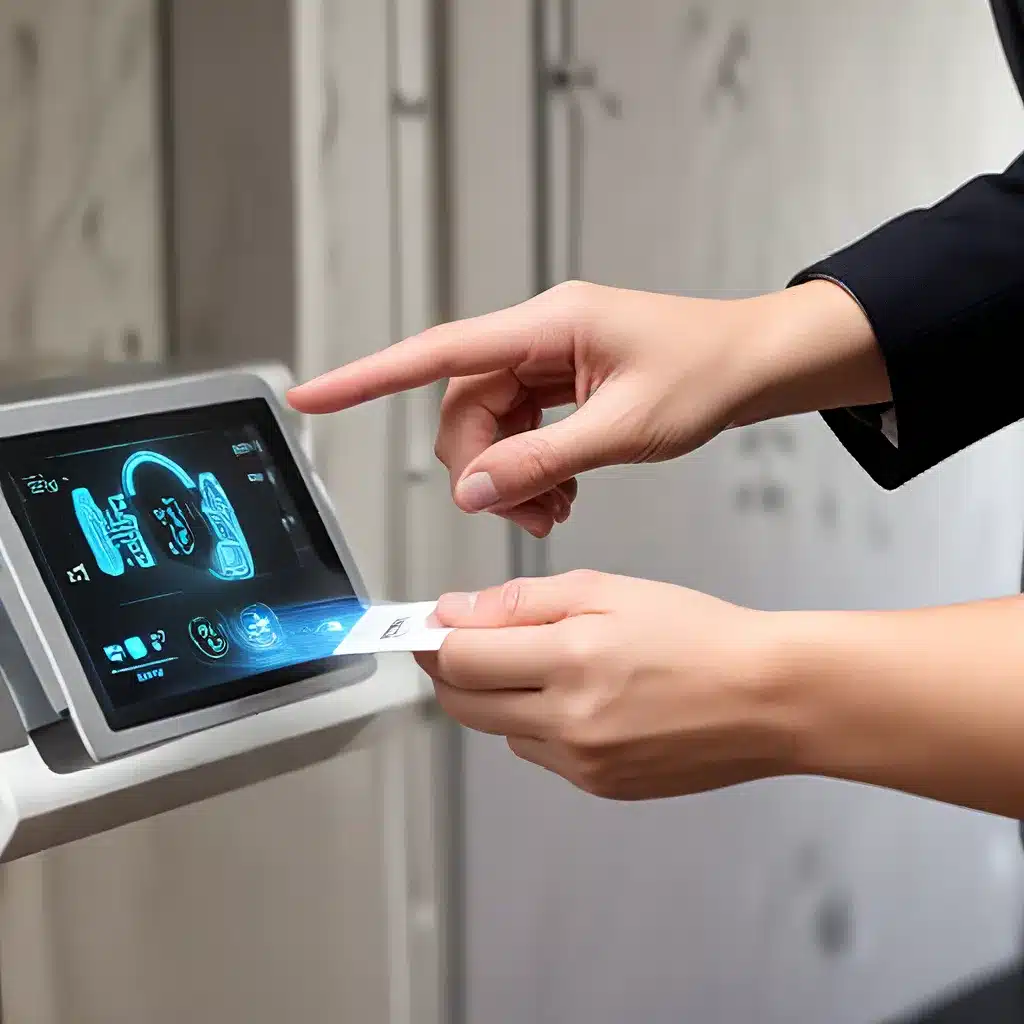
The Rise of the IoT Era and the Need for Robust Security
The Internet of Things (IoT) has revolutionized the way we interact with our surroundings, enabling a seamless integration of digital and physical worlds. As more devices become interconnected, the security of these systems has become a paramount concern. Radio Frequency Identification (RFID) and Near-Field Communication (NFC) technologies have emerged as versatile solutions for IoT applications, offering unique opportunities for enhanced security and authentication mechanisms.
In this article, we will explore the advantages of using RFID and NFC-based biometric authentication in the IoT landscape, addressing the critical security challenges faced by these interconnected systems. We will delve into the technical underpinnings of these technologies, their real-world applications, and the strategies employed to ensure the confidentiality, integrity, and availability of IoT data and devices.
The Role of RFID and NFC in IoT Security
RFID and NFC are wireless communication technologies that have found widespread adoption in the IoT ecosystem. These technologies enable contactless identification, data exchange, and authentication, making them well-suited for a variety of IoT applications, such as access control, asset management, supply chain tracking, and smart city infrastructure.
Biometric authentication leveraging RFID and NFC offers several advantages over traditional password-based or token-based approaches. By incorporating unique physiological or behavioral characteristics, such as fingerprints, iris scans, or voice recognition, these authentication methods enhance security and reduce the risk of unauthorized access or data breaches.
Enhancing IoT Security with RFID and NFC Biometrics
RFID and NFC-based biometric authentication provide a multi-factor approach to securing IoT systems, combining something you have (the RFID/NFC device) with something you are (the biometric characteristic). This approach significantly reduces the risk of identity theft and ensures that only authorized individuals can access sensitive IoT devices and data.
The use of biometric identifiers in IoT applications also enhances user convenience by eliminating the need for remembering complex passwords or carrying additional access tokens. This seamless integration of security and usability is a key driver for the widespread adoption of RFID and NFC-based biometric authentication in the IoT domain.
Addressing IoT Security Challenges with RFID and NFC
IoT systems face a wide range of security threats, including data breaches, device tampering, and unauthorized access. RFID and NFC-based biometric authentication address these challenges by:
-
Ensuring Confidentiality: The encryption and secure communication protocols employed in RFID and NFC systems protect sensitive IoT data from eavesdropping and unauthorized access.
-
Maintaining Integrity: Biometric authentication verifies the identity of IoT device users, preventing impersonation and data manipulation by malicious actors.
-
Enhancing Availability: By restricting access to authorized users and mitigating the risk of unauthorized device control, RFID and NFC-based biometric authentication ensure the continuous availability of IoT systems.
Researchers have demonstrated the effectiveness of RFID and NFC-based biometric authentication in various IoT applications, including smart homes, healthcare monitoring, and industrial automation. These technologies have proven to be reliable, scalable, and cost-effective solutions for enhancing the overall security posture of IoT ecosystems.
Energy-Efficient Designs for RFID and NFC-based IoT
One of the key challenges in IoT is balancing security requirements with energy consumption, as many IoT devices operate on limited power sources. RFID and NFC technologies offer energy-efficient solutions for IoT by:
-
Minimizing Power Consumption: RFID and NFC devices consume less power than traditional wireless communication technologies, making them suitable for battery-powered IoT applications.
-
Leveraging Passive Communication: Passive RFID tags and NFC-enabled devices can harvest energy from the radio frequency (RF) field, eliminating the need for onboard power sources and further reducing energy requirements.
-
Implementing Lightweight Cryptography: RFID and NFC systems employ specialized cryptographic algorithms that are computationally efficient, ensuring secure communication without excessive power drain.
These energy-efficient design principles, combined with the security benefits of biometric authentication, make RFID and NFC-based IoT solutions particularly attractive for applications where power consumption and security are critical factors, such as wearable devices, smart city infrastructure, and industrial automation.
The Future of IoT Security: RFID and NFC Biometrics
As the IoT landscape continues to evolve, RFID and NFC-based biometric authentication will play an increasingly vital role in securing these interconnected systems. With the growing adoption of 5G and edge computing technologies, the demand for real-time, secure, and energy-efficient IoT solutions will only intensify.
The integration of RFID and NFC with biometric identification will enable more robust and user-friendly security measures, empowering IoT users to seamlessly authenticate and access their devices while safeguarding sensitive data and critical infrastructure.
By leveraging the strengths of these technologies, the IoT community can build a more secure and resilient IoT landscape, addressing the evolving security challenges and unlocking new possibilities for innovative, connected applications** that improve our daily lives.